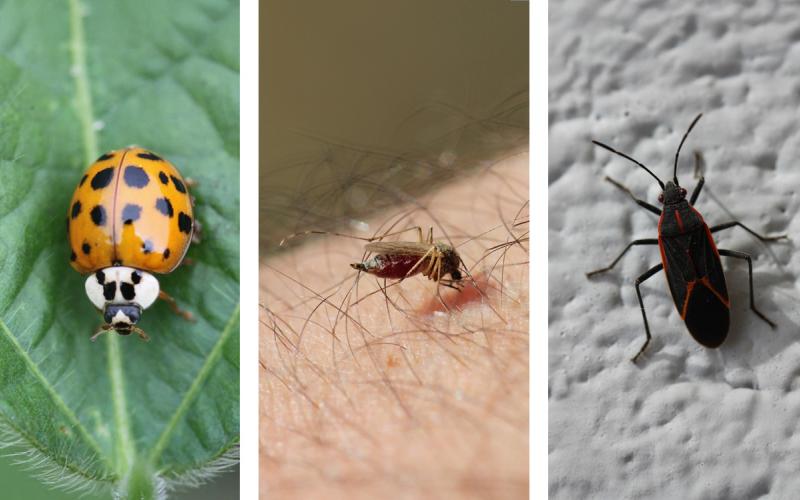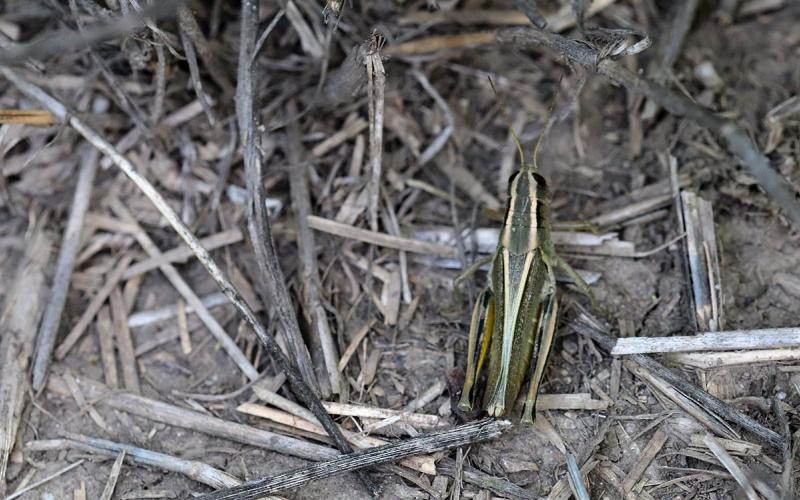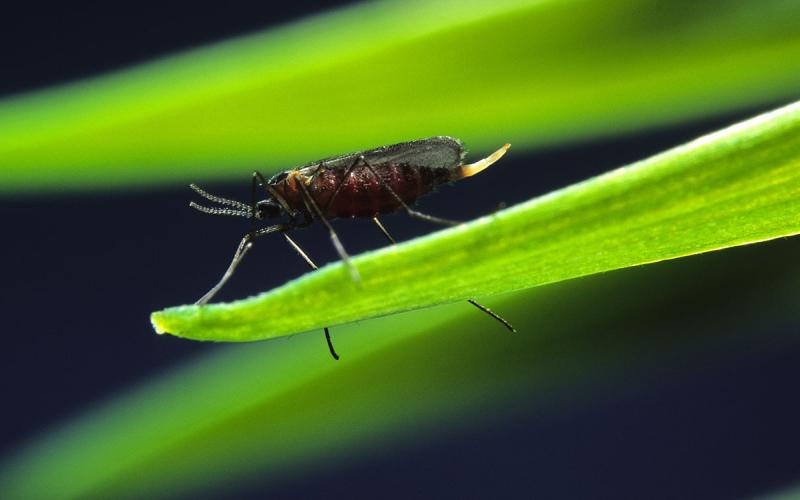Written with contributions by Shelby Pritchard, former SDSU Extension Pest Management Specialist.
Originally Submitted: July 22, 2022
Hessian flies (Mayetiola destructor) are tiny, gnat-like flies that belong to the family Cecidomyiidae within the order Diptera (i.e., flies). There are two generations per year in South Dakota. The larvae are considered serious pests of wheat and occasional pests of barley and rye. Management approaches, such as planting resistant wheat varieties and planting after fly-free dates, can be used to try and prevent Hessian fly populations from increasing to damaging levels of infestation.
Biology of Hessian Fly
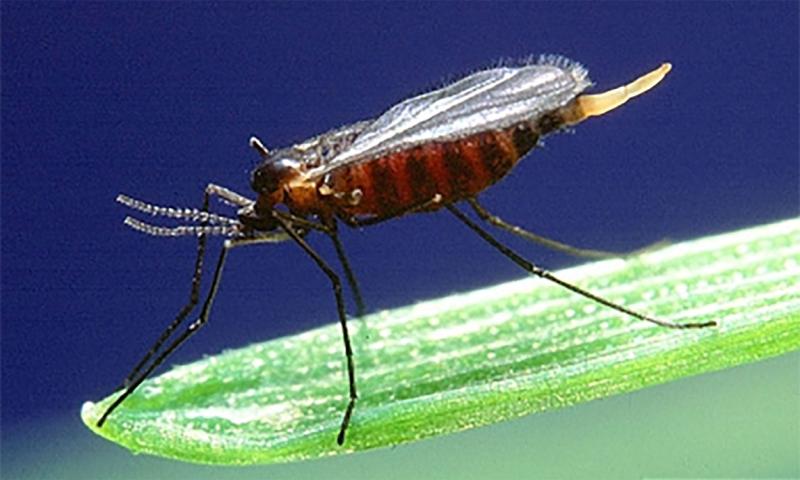
Appearance
- Adult: Female Hessian fly adults are reddish-brown to black in color and are approximately 1/8th of an inch in length. Males are slightly smaller than females and are typically brown to black in color. The adults can be distinguished by their black wings, 12 to 16 segmented antennae, and legs as long as their body (Figure 1).
- Egg: Hessian fly eggs are small, rusty orange in color and elliptical in shape.
- Larvae: The larvae are initially red in color, but eventually turn a semi-translucent white with a pale green stripe down the center. Hessian fly larvae lack a head capsule and can reach approximately 3/16th of an inch in length when mature (Figure 2).
- Pupae: Hessian fly pupae are spindle-shaped and rusty brown in color. They resemble flaxseeds and reach approximately 3/8th of an inch in length (Figure 3).
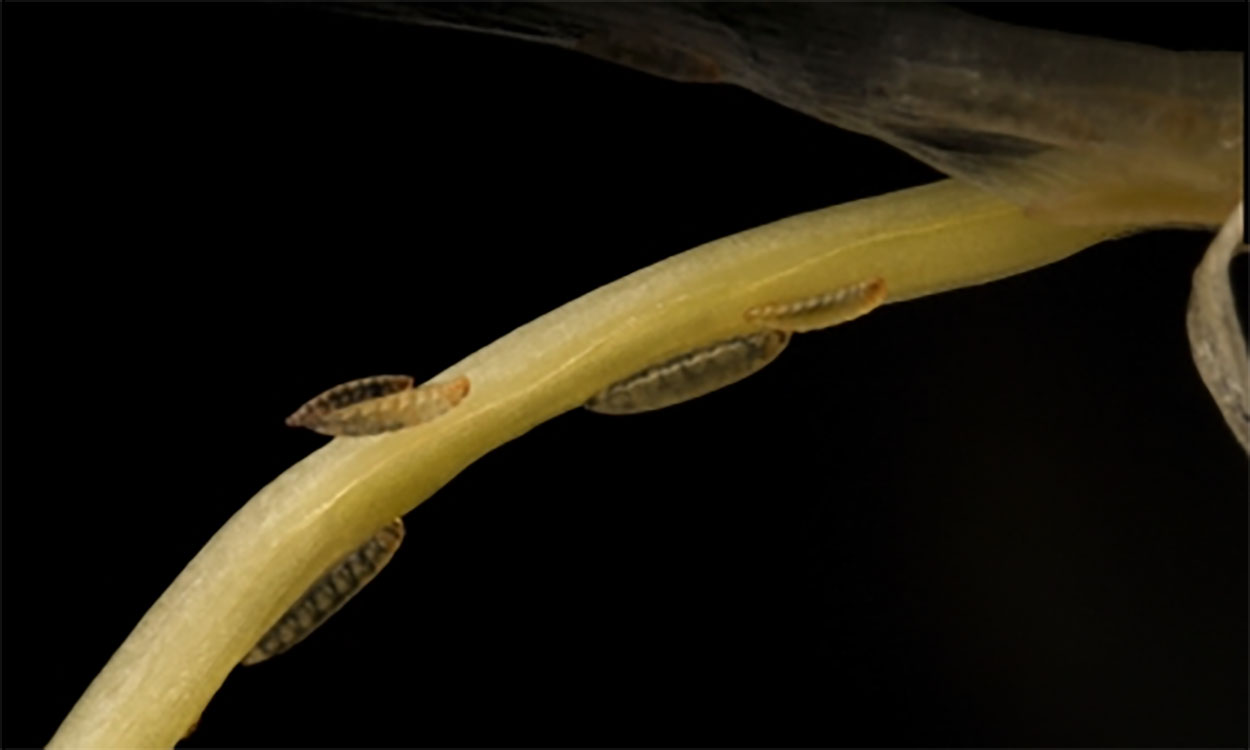
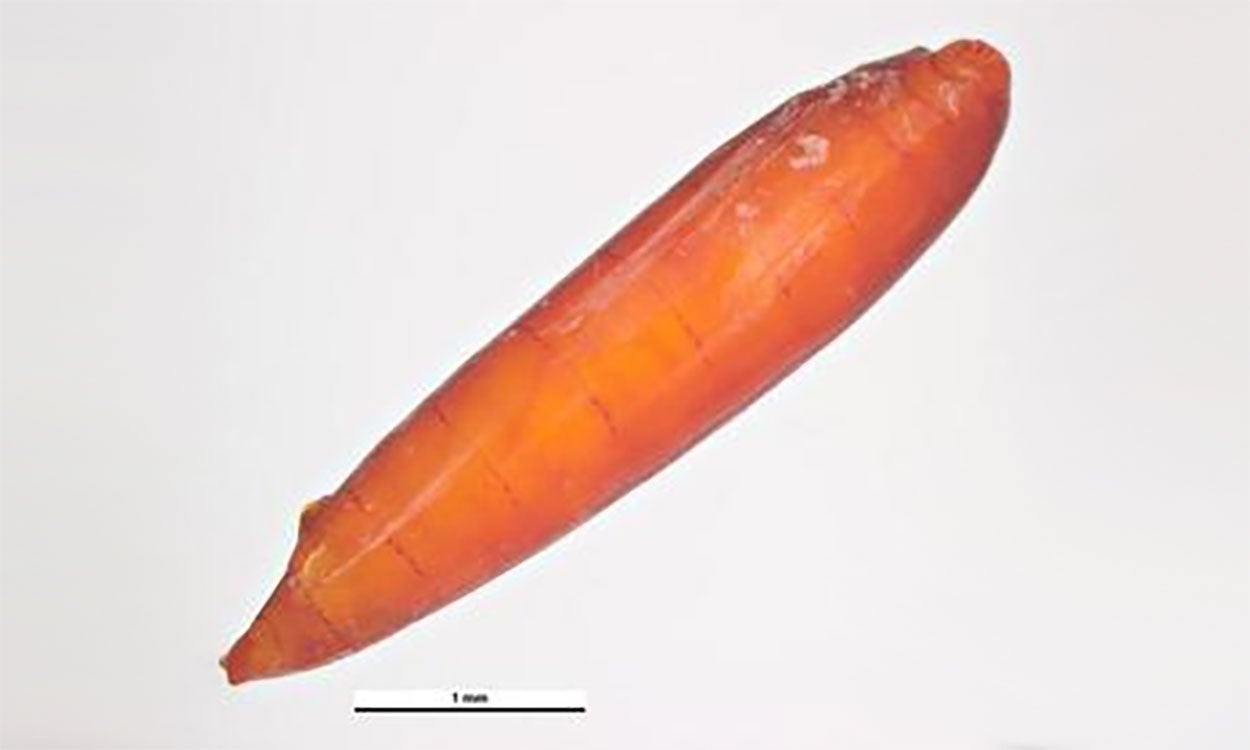
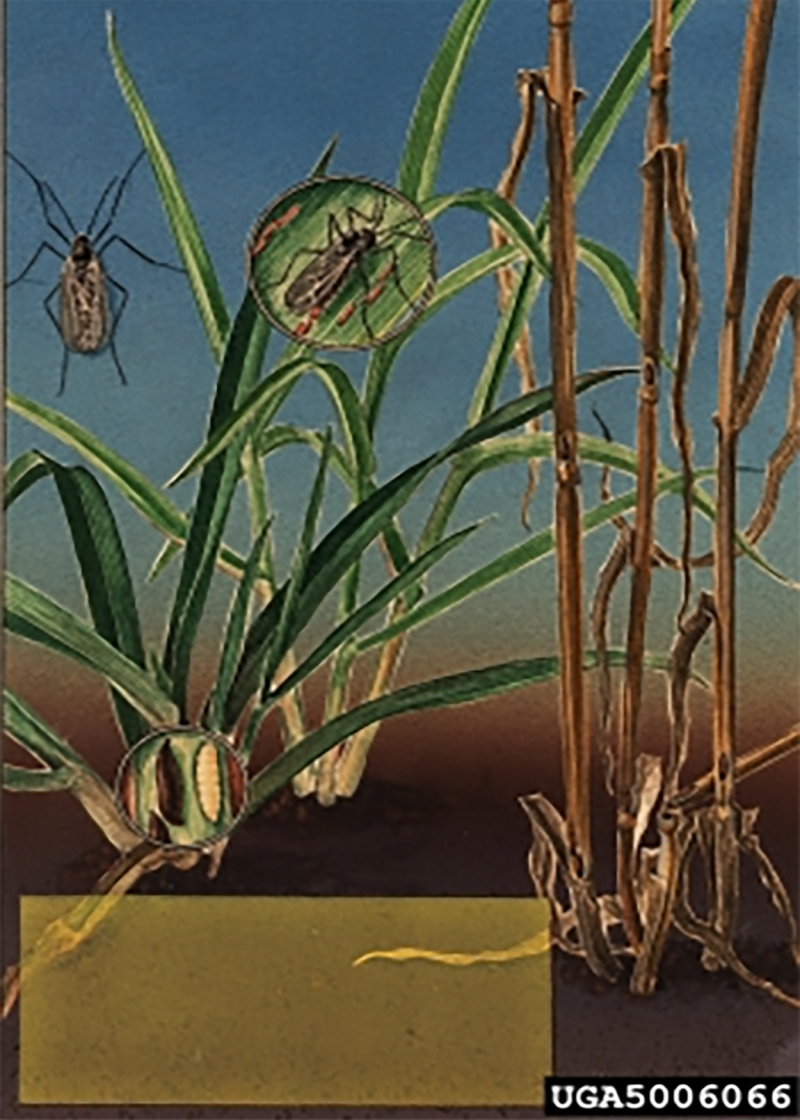
Lifecycle
There are two generations of Hessian fly per year in South Dakota (early fall and spring). Adult flies emerge in the fall and only live for a few days.
During their short lifespan, mated females lay approximately 300 eggs. The eggs can typically be found laid end-to-end between the veins of young wheat leaves. Larvae emerge and feed on the tissue of wheat plants until maturity is reached, which takes approximately 30 days. Hessian fly larvae form into pupae and remain in the wheat plant while they overwinter. The second generation of Hessian fly adults emerge between April and May, where their lifecycle starts over again (Figure 4).
Plant Damage
Hessian flies are known to feed on barley and rye, but wheat is its preferred host. The larval stage is considered the destructive stage, where significant yield loss has been observed. Hessian fly larvae feed on the leaves, stems and tillers of wheat plants. During the fall, larvae typically feed on lower leaves by using their mouthparts to scrape and suck up the plant nutrients. This type of feeding can cause plants to become stunted due to the lack of nutrients being distributed throughout the plant.
Excessive feeding can cause plants to become weak with erect, blueish-green leaves and even plant death (Figure 5). Larval feeding damage during the spring is similar to that in the fall, but with an increase in lodging.

Management
- Monitoring: Consistently monitor fields for signs of Hessian fly damage or presence. Peel away the sheath near base of plant to expose larvae or pupae.
- Resistant Cultivars: Planting resistant wheat cultivars for Hessian fly can help to suppress populations. There are currently 34 Hessian fly resistant genes identified. However, it is important to rotate cultivars to help eliminate the chance of pests developing resistance.
- Fly-Free Dates: Avoid planting (if possible) until after a fly-free date. Fly free dates have been used to determine when Hessian fly activity has ceased during the fall, and planting is “safe.” However, these dates can vary depending on many environmental factors.
- Crop Rotation: Hessian flies have a very limited host range. Avoid planting wheat back-to-back where problems with Hessian flies have previously occurred.
- Weed Removal: Remove any volunteer wheat or “green bridges” prior to planted wheat. This will reduce egg laying sites and overwintering populations.
References
- Ryan B Schmid, Allen Knutson, Kristopher L Giles, Brian P McCornack, Hessian Fly (Diptera: Cecidomyiidae) Biology and Management in Wheat, Journal of Integrated Pest Management, Volume 9, Issue 1, 2018, 14.
- Hessian Fly Management in Iowa, Iowa State University Extension and Outreach.
